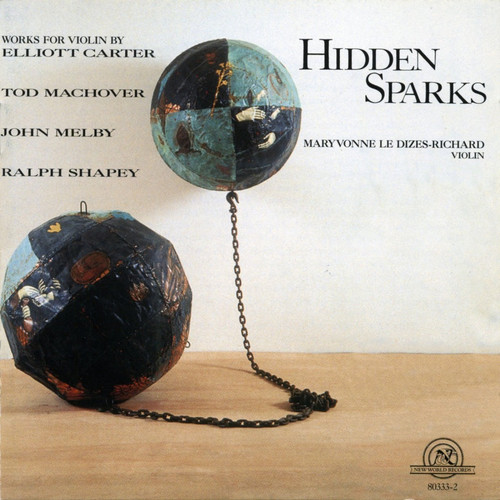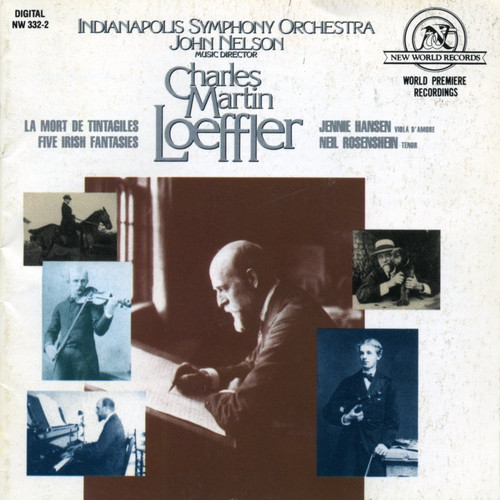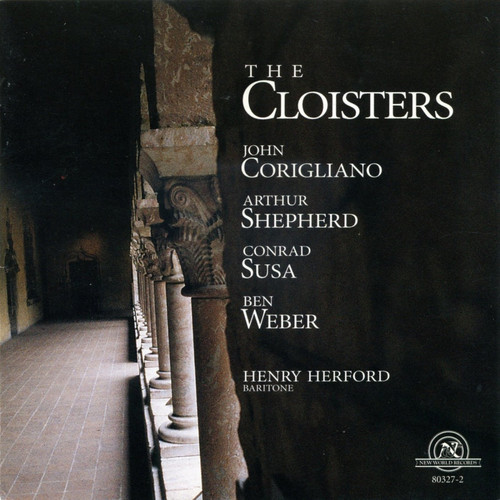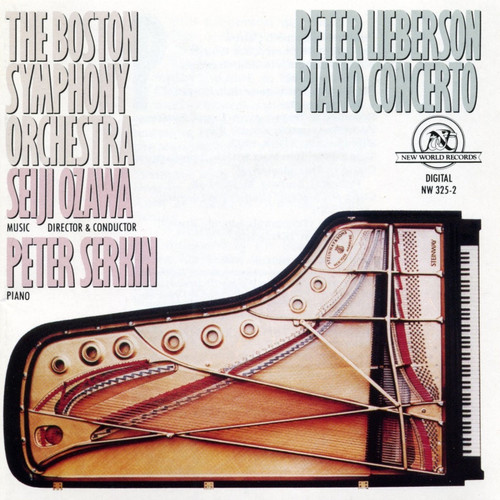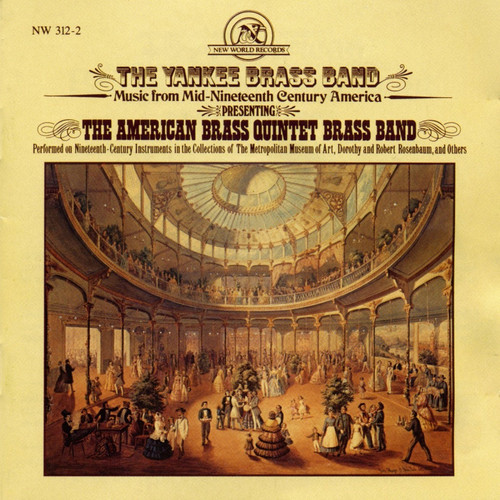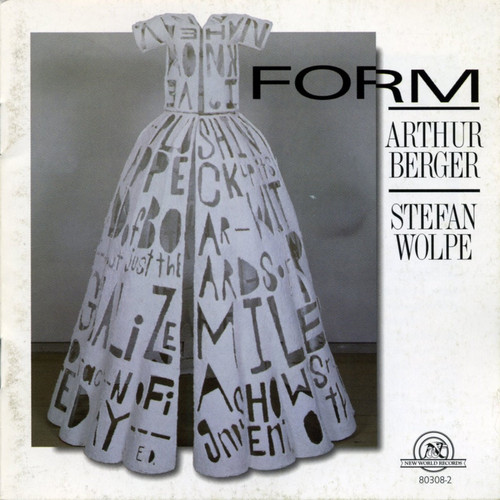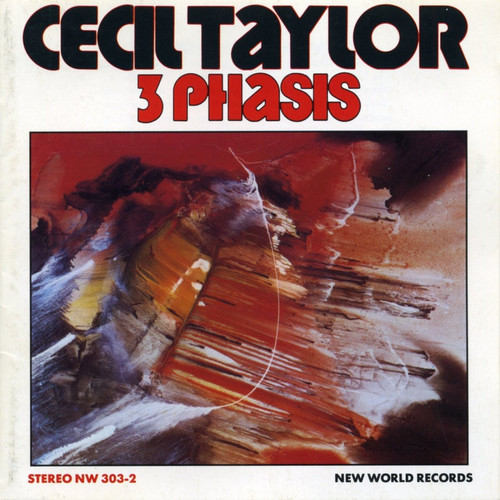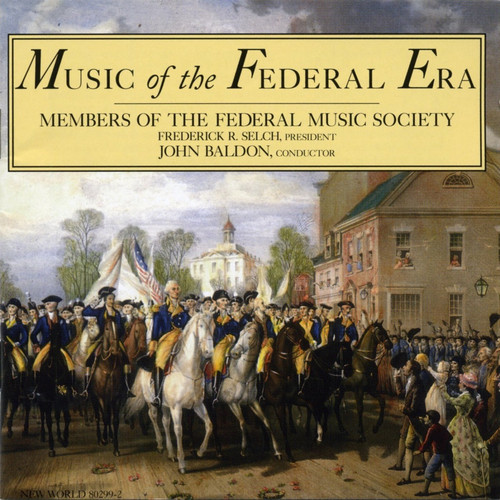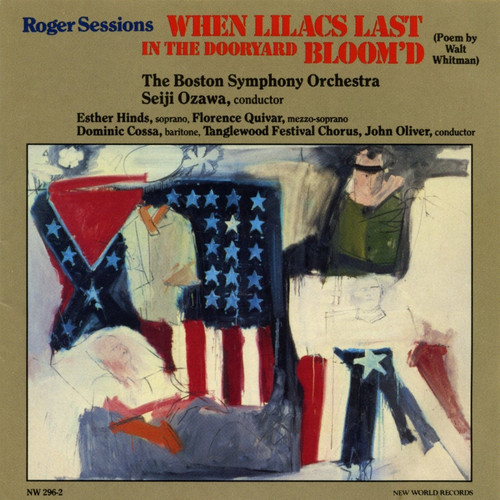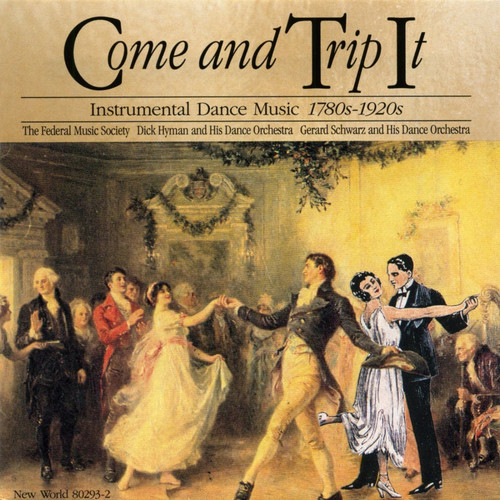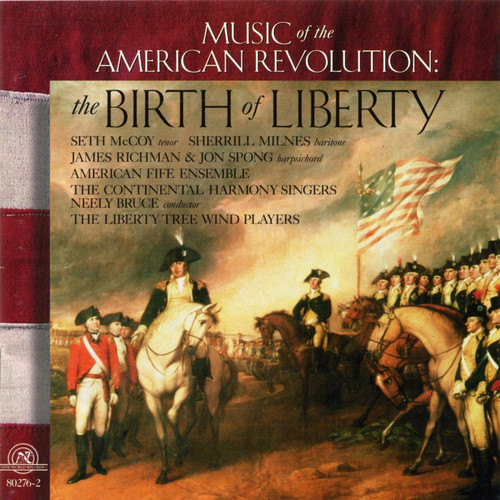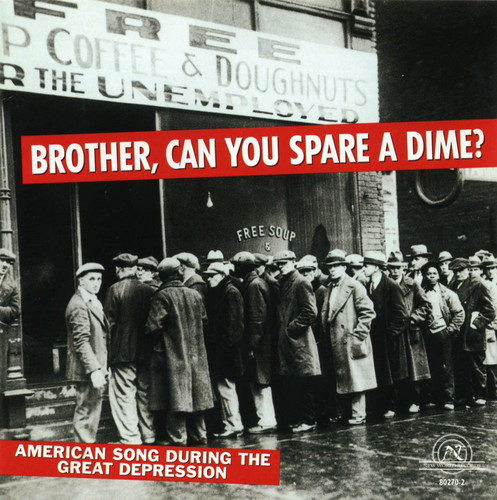★New World Records
Works By: Hugh Aitken, Aaron Copland, Walter Piston, Paul Schoenfield, Gunther Schuller
Perhaps from the habit of our nineteenth-century parlor-music tradition, perhaps from the frustration of trying to get orchestral works performed, American composers seem to have remained more active in the genre of the chamber sonata than their Euro…
Hidden Sparks
This recording contains four works for violin by four disparate American composers with unique conceptions of the instrument and its possibilities, technical and expressive. Elliott Carter's Riconoscenza is a short work for unaccompanied violin imbu…
Indianapolis Symphony Orchestra, John Nelson (5), Jennie Hansen, Neil Rosenshein, Charles Martin Loeffler
La Mort De Tintagiles / Five Irish FantasiesThe music of Charles Martin Loeffler (1861-1935) was a rarity in the United States. Much admired for its artistry, it was yet so individual and its Symbolist aesthetic so unusual that Loeffler acquired a reputation that set him apart from other Ameri…
Sinfonia / Symphony No. 1
John Harbison's music draws together gestures and ideas from musical worlds that reflect such favorite composers as Robert Schumann and Heinrich Schutz, the songs of George Gershwin, and the hieratic qualities of Igor Stravinsky. His work has always …
The Cloisters
The vocal music on this recording documents three generations of American music, each characterized by its own ideals yet shaped by its relationship to the past. Heard together on one disc, this music provides a glimpse of the rapid and often radical…
Piano Concerto
The Piano Concerto was Peter Lieberson's first orchestral work and was, from the outset, conceived with Peter Serkin in mind as the soloist. He wrote it after a long period of immersion in the study of Tibetan Vajrayana Buddhism. Throughout what Lieb…
Antony And Cleopatra
This is the premiere recording of Samuel Barber's Antony & Cleopatra, written for the opening of the new Metropolitan Opera House at Lincoln Center in 1966. Along with Vanessa, it is one of the peaks of Barber's output and one of the great American o…
Winter Cantata, Other Works
Vincent Persichetti's choral music plays an important part role in his output. In many ways his Mass is an orthodox a cappella Mass, its Renaissance heritage reflected in its use of a Gregorian chant as the unifying theme, and in its reliance on imit…
The Yankee Brass Band (Music From Mid-Nineteenth Century America)
Brass bands flourished in mid-nineteenth century America and were an integral and indispensable part of the social, cultural, and political life of the land. Regimental bands assumed tremendous importance during the Civil War whilst civic bands suppl…
Concerto For Clarinet And Orchestra / Third Essay For Orchestra, Opus 47
The Third Essay was Samuel Barber's last completed work and its drama and lyricism are entirely characteristic of the neo-Romantic style he composed in for his entire life, a style which won him a large and faithful audience. In his avowed concern f…
Form
Comet-like radiance, conviction, fervent intensity, penetrating thought on many levels of seriousness and humor, combined with breathtaking adventurousness and originality, marked the inner and outer life of Stefan Wolpe, as they do his compositions.…
3 Phasis
3 Phasis is the companion disc to the Cecil Taylor Unit, both set down over four miraculous days in April 1978. It too is a testament to the perfectionism and unpredictability that are hallmarks of Taylor's music. As always, he is the instigator and…
Music of the Federal Era
Music of the Federal Era is an excellent overview of late 18th and early 19th century compositions by Benjamin Carr, Oliver Shaw, Raynor Taylor and others, performed on period instruments. The variety of styles represented on this disc reflects two k…
Songs of Love, Luck, Animals, & Magic
In aboriginal times the coastal Indians of Northern California shared a tremendous wealth of food, clothing, and material goods. From Trinidad, California, to the Oregon border, the forests almost touch the Pacific Ocean, which gave the people the bo…
When Lilacs Last In The Dooryard Bloom'd
Of the numerous settings of Walt Whitmans poetry, and this poem in particular, Sessions's is generally agreed to be one of the very finest and most sensitive. His mature style - a highly personal, instantly recognizable mix of severity and control w…
Come and Trip It-Instrumental Dance Music: 1780s to 1920s
This recording demonstrates some of the major developments in American social dancing and its music from after the Revolution up to the beginning of electrical recording in the mid-1920s. Dances such as the waltz, polka, tango, quadrille, charleston,…
Quartet Romantic
The generation of American composers who came of age in the 1920s are now generally acknowledged as seminal figures in the creation of a truly indigenous American art music. Quartet Romantic makes available for the first time on CD several important …
Yes Sir, That's My Baby (The Golden Years Of Tin Pan Alley 1920-1929)
The naive romanticism of the Jazz Age, when, as F. Scott Fitzgerald saw it, "people danced in a champagne haze on the rooftop of the world," was nowhere more clearly reflected than in America's popular music of the 1920s. The banal optimism, the desp…
Seth McCoy, Sherrill Milnes, James Richman, Jon Spong, American Fife Ensemble, The Continental Harmony Singers, The Liberty Tree Wind Players
Music Of The American Revolution: The Birth Of LibertyAn evergreen for Fourth of July festivities, this reissue of music from the American Revolution restores to the catalog a classic of the original Recorded Anthology of American Music. It is a scholarly and well-programmed musical recreation of a defi…
Brother, Can You Spare A Dime? (American Song During The Great Depression)
American society was much less homogeneous during the Great Depression (1929 - 1941) than it became after World War II. There were still quite sharply defined classes, divided along economic, geographic, and ethnic lines. Each group was affected by t…

